Images
Photographed on August 1, 2003
Select image to view a larger version
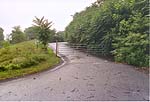
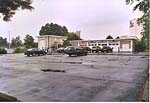
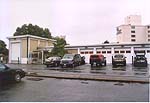
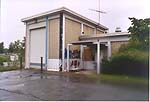
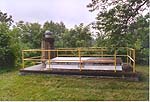



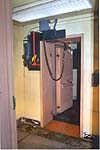
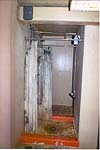


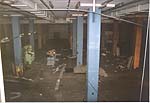
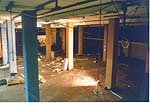
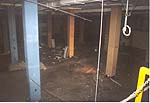
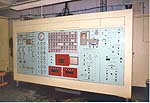




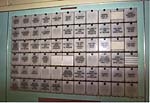



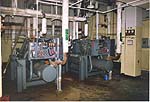
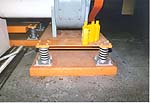
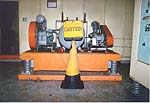
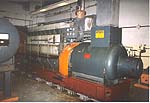
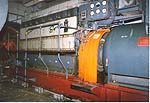

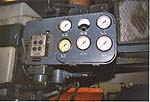
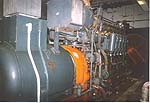

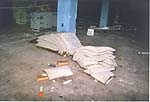
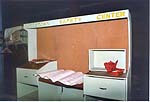
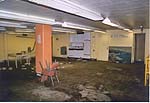
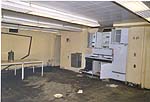
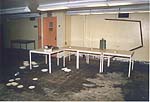
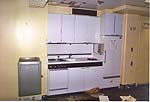
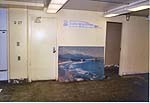
The underground facility at Pottstown represents AT&T's earliest efforts to build a nationwide telecommunications network which could survive a nuclear attack. It is a product of political, military and technological influences.
In the mid-late 1950s, America's fear of a nuclear attack by the Soviet Union was growing. By 1953 the USSR had tested its first thermonuclear ("hydrogen") bomb, having exploded a fission ("atomic") bomb four years earlier. The reported "bomber gap" - Soviet superiority in long-range bombers - would give way to a "missile gap" as the USSR's rapid development of intercontinental ballistic missiles threatened to leave the the U.S. mainland vulnerable to a devastating attack with only minutes of warning. Soviet Premier Nikita Krushchev's "We will bury you" rhetoric and the his nation's startling progress in the nascent "space race" reinforced America's perception of a formidable and determined opponent.
As America's sole long-distance telephone carrier and a major provider of telecommunications services to the federal government, the American Telephone and Telegraph Company had to react to these developments. The speed with which a Soviet attack could take place, and the need to quickly coordinate a complex military and civilian response, demanded a fast, flexible and reliable communications network. And that network would be required to function even after a nuclear attack; that is, it had to be "hardened".
While national-security concerns dictated the need for a new kind of network, technology defined the form it would take. At the time Pottstown was built, long before the fiber-optic networks became practical, AT&T was using both of the available broadband transmission technologies: microwave radio and coaxial cable.
Growing demand for long-distance service after World War II, as well as the potential revenue from delivering network television programming to local broadcasters, had led AT&T to emphasize the development of "broadband" transmission systems. Unlike earlier technologies which could combine a dozen calls on a pair of wires, these systems could carry hundreds of simultaneous telephone calls or one television program on a single coaxial conductor or microwave radio channel..
Coaxial cables could be - and usually were - buried in the ground or pulled into underground conduits. This feature made them a good choice for AT&T's hardened network, since the earth offers substantial protection from the effects of a nuclear detonation. In contrast, the tall towers and large sheet-metal antennas of a microwave system would be vulnerable to the blast's air pressure and flying debris, and difficult to protect from those hazards.
An AT&T coaxial cable was comprised of several "coaxial units" bundled together under a protective sheath. In general, a coaxial unit is simply an electrical conductor enclosed by, and insulated from, another conductor. Its key property is the ability to efficiently conduct high-frequency currents, the basis of broadband communication. An AT&T's coaxial unit was a copper tube about 3/8 of an inch in diameter, with a bare copper wire centered inside it by means of thin plastic disks spaced about an inch apart. Coaxial units were always used in pairs for telephone service, one unit for each direction of transmission. The coaxial cables could be up to three inches in diameter, containing a maximum of 22 coaxial units and weighing as much as 9 pounds per foot.
A long-distance coaxial-cable network required much more than just a piece of cable. Multiple telephone circuits had to be combined and inserted onto a pair of coaxial units, then extracted and separated at their destinations. Power had to be supplied through the cable to amplifiers spaced along the route, and those amplifiers, like the cable itself, had to be monitored constantly to detect failures. Failures often affected only one of the cable's coaxial tubes, so equipment was provided to automatically switch service to a spare or "protection" tube. Because a coaxial cable might be carrying thousands of telephone calls and TV networks programming for much of the country, cable damage and equipment malfunctions required immediate response. This meant that technicians had to be stationed at intervals along the cable route, so they could quickly reach any part of the network.
Facilities like Pottstown, called "main stations", were built on the cable route to house these vital functions. The coaxial cable which Pottstown served was a transcontinental route, stretching from New York to California. Unlike earlier telephone lines which usually followed the most direct path from one city to another, this hardened route ran well outside the major cities it served. This "avoidance routing" protected the cable from attacks on the cities, which were assumed to be likely Soviet targets. The cities were linked to main stations on the cable by microwave radio or coaxial cable. In this way, the destruction of a city would not interrupt "through traffic" along the cable.
Pottstown was connected indirectly to Philadelphia, about 30 miles to the southeast, by a coaxial cable to the large microwave-radio main station at Lionville. Lionville, in turn, "talked" to a Bell System office in Philadelphia by microwave radio. Pottstown also had a coaxial-cable link to the important long-distance switching center at Wayne, PA.
The main stations adjacent to Pottstown on the cable were Airmont, NY to the north, and Monrovia, MD to the south. Airmont, the eastern terminal of the transcontinental route, linked the cable to New York City, while Monrovia served Baltimore and the Washington area. From Monrovia, the cable headed west, passing through additional main stations and terminating at Mojave, California.
The original cables linking Pottstown to the neighboring main stations were two eight-tube coaxials, buried under four feet of earth with shield wires placed two feet above the cables for lighting protection. The installation process was similar to pipe line construction: a trenching machine excavated a trench two feet wide and four feet deep, then a cable-laying tractor which placed the cable from a large spool, and finally another machine placed the shield wires and backfilled the trench.
The major structures at Pottstown are two adjacent reinforced-concrete underground buildings connected by several short passageways and covered by about three feet of earth and the station's asphalt parking lot, along with a surface building provides access to the underground structures and includes several vehicle garage bays.
The first underground building, constructed in 1960, supported the main-station functions for the transcontinental cable route. The second building was constructed in 1966 and housed an Electronic Switching System (ESS) for the Department of Defense's Automatic Voice Network (AUTOVON). AUTOVON was, in essence, a private long-distance telephone network for DoD installations worldwide. It was an important element of military communications in the Cold War era.
Each underground building consists of a single level with a high ceiling (about 18 feet) - typical Bell System construction to accommodate tall bays of equipment and their overhead cables. A portion of the space along one end of each building contains a mezzanine level, where a kitchen/lounge area, restrooms and other support facilities are located.
Concrete shafts link the underground buildings to the surface. Today, the main entrance is through a vertical concrete shaft about 25 feet deep, leading to the 1966 building. A partition divides the shaft into two sections - one containing a steel stairway for personnel entry-egress, and the other serving as a hoistway for equipment.
At the bottom of the stairway is a heavy motor-operated steel blast door, much like a vault door. Beyond this door is a small concrete chamber, followed by another blast door. This configuration is called a "blast lock". Electrical controls allowed only one door to be open at a time, thus protecting the facility even when people were entering or exiting.
After passing through the blast lock, people entering the station would normally walk through a door directly into the equipment room. But after a nuclear attack, they might have been contaminated by radioactive fallout. To deal with this problem, a walk-through decontamination shower area is located adjacent to the inner blast door. It consists of an undressing room, a shower stall with five heads, and a dressing room.
Other protective features at Pottstown include a ventilation system which maintained positive air pressure in the building and used special air filters to remove fallout particles, an "inertia slab" floor supported by springs, a 550,000-watt diesel generator for emergency power, electrical and mechanical equipment mounted on springs, and a nuclear-detonation detector atop a concrete column adjacent to an emergency-exit stair shaft.
Thanks to John Tumolo for his contributions to this section.
 |
 |
 |
 |
 |
 |
 |
 |
 |
 |
 |
 |
 |
 |
 |
 |
 |
 |
 |
 |
 |
 |
 |
 |
 |
 |
 |
 |
 |
 |
 |
 |
 |
 |
 |
 |
 |
 |
 |
 |
Updated on January 24, 2004 at 00:50 by Albert LaFrance